Bourdeaux is the capital of the Nouvelle-Aquitaine region, and has over a million inhabitants, if you include the suburbs. The name comes from ‘border’ and ‘eau’ = water, ie the border of the water. And if you have a somewhat wider perspective, this is actually a port city, even though it is located as much as 100 km from the coast. La Garonne is navigable all the way up, and there are 9 km of quays along the river.
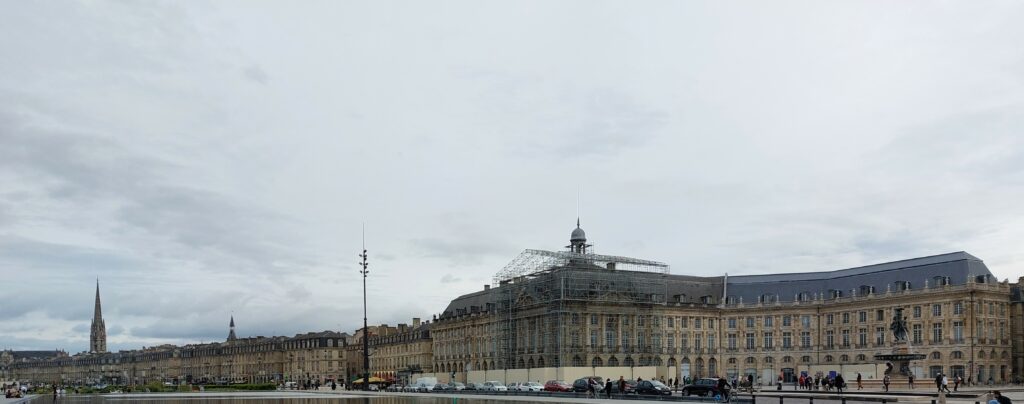
In the Middle Ages, there was a large slum in Bordeaux. To make the city presentable for the foreign wine traders, it was decided to create ‘Port de la Lune’ = Port of the Moon; large, beautiful buildings facing the harbor – with the slums neatly hidden behind. Clever! The area is inscribed at UNESCO’s World Heritage List. Bordeaux is an ancient city, from pre-roman times, originally Celtic. The region for a long time was subject to England, e.g. during the Hundred Years’ Wars, but there are not many traces of this in the center of Bordeaux today.
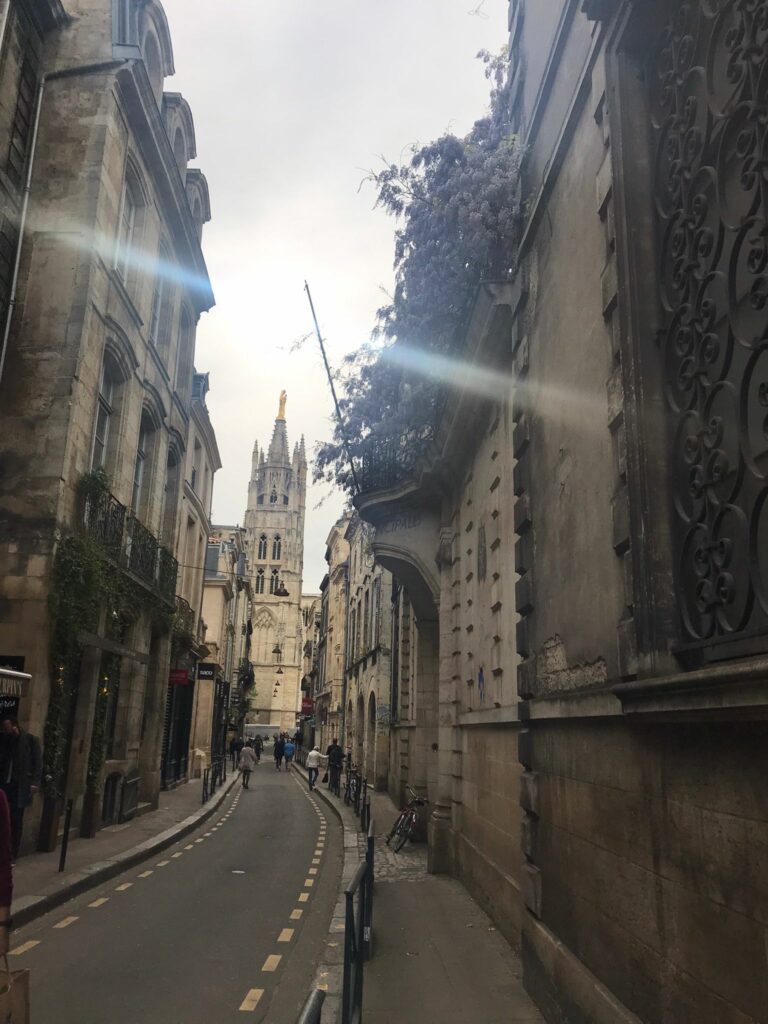
There are many magnificent churches in Bordeaux, the city has been an archbishop’s seat since 300 AD. After spending an entire morning trying to find the St. Peter’s Church (and the rest of the company), Idun had to admit that the beautiful church she was looking for was the Cathédrale Saint-André de Bordeaux, and not the Eglise Saint-Pierre. The cathedral was consecrated by Pope Urban II in 1096. He helt a speech here to collect support for the first crusade. But even though St. Andrew’s Cathedral is great, we think that the bell tower’s 20th century statue of The Holy Mother was too much for our taste.
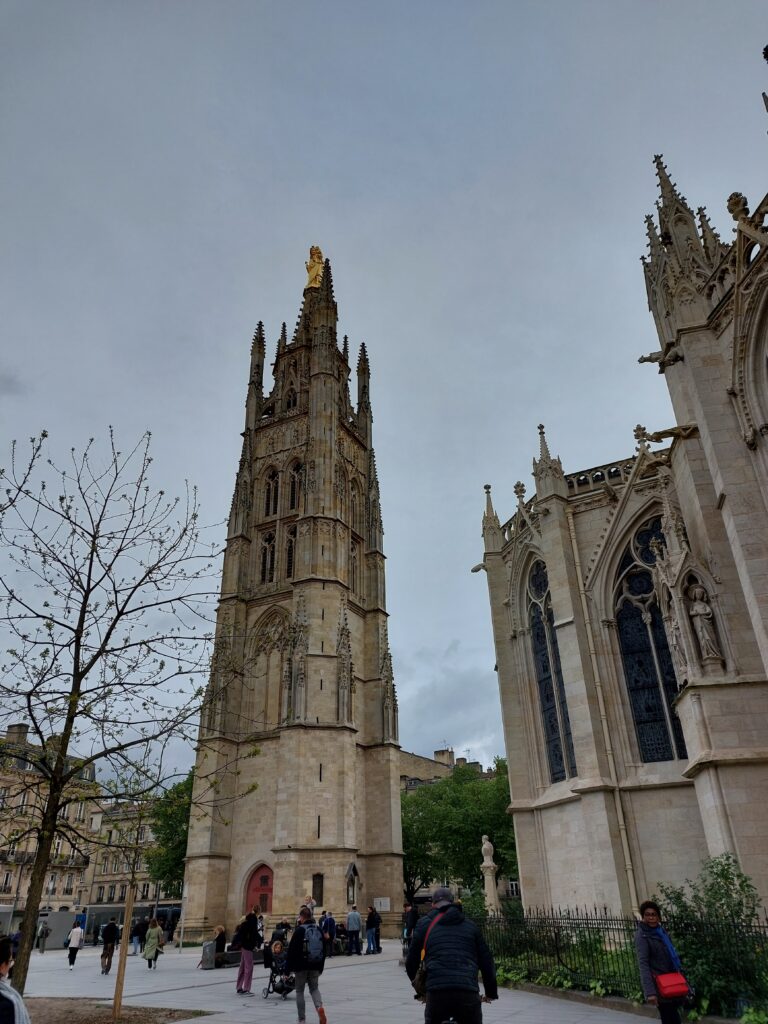
After the city walk, a bath is just the right thing to do, but we really would not recommend La Garonne. And not because of this sign!
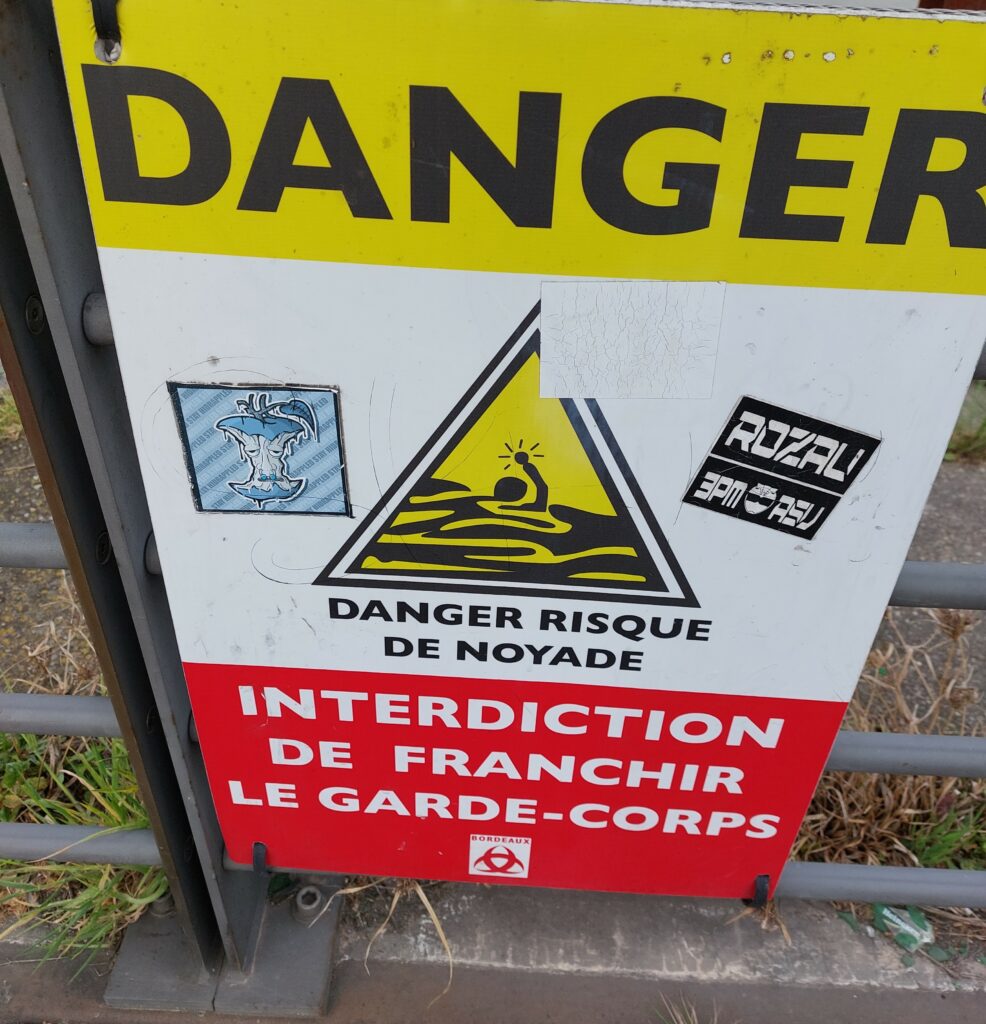
Swimming can be dangerous if you can’t swim, yes, we definitely knew that already. The problem was the water in the river. In La Garonne we found the brownest water we have seen in a long time. Mud bath, it was!
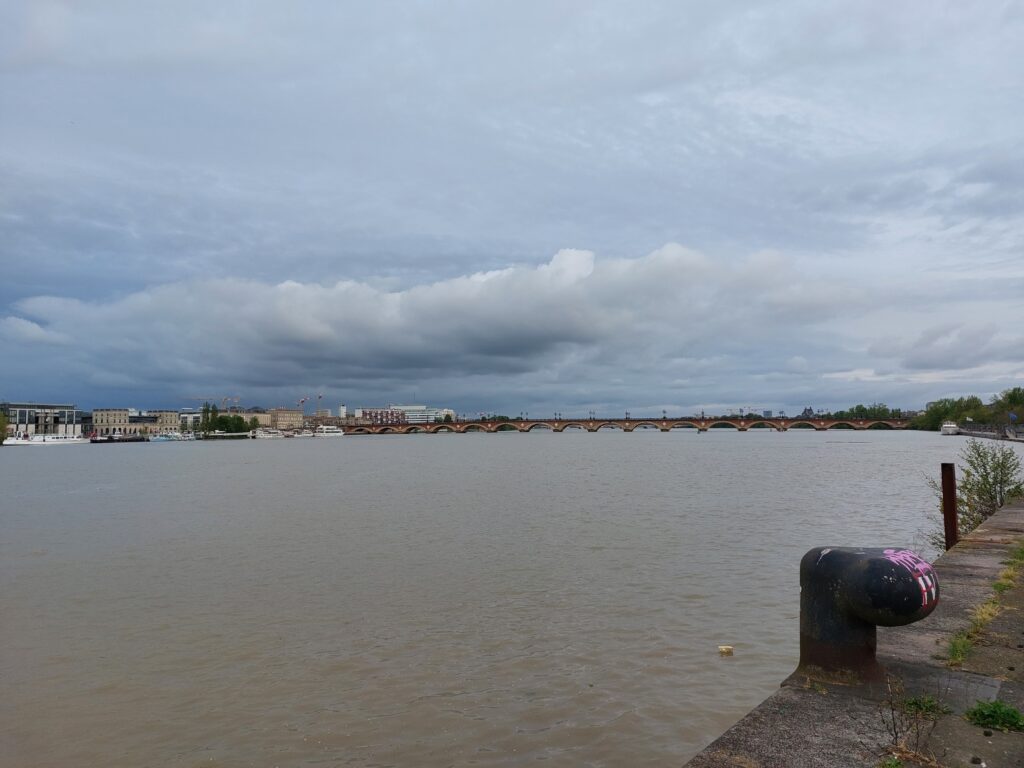
We have heard that mud baths are healthy, but think maybe not this kind. Alternatives had to be found, and that was super easy in Bordeaux. We recommend a foot bath in front of La Bourse!
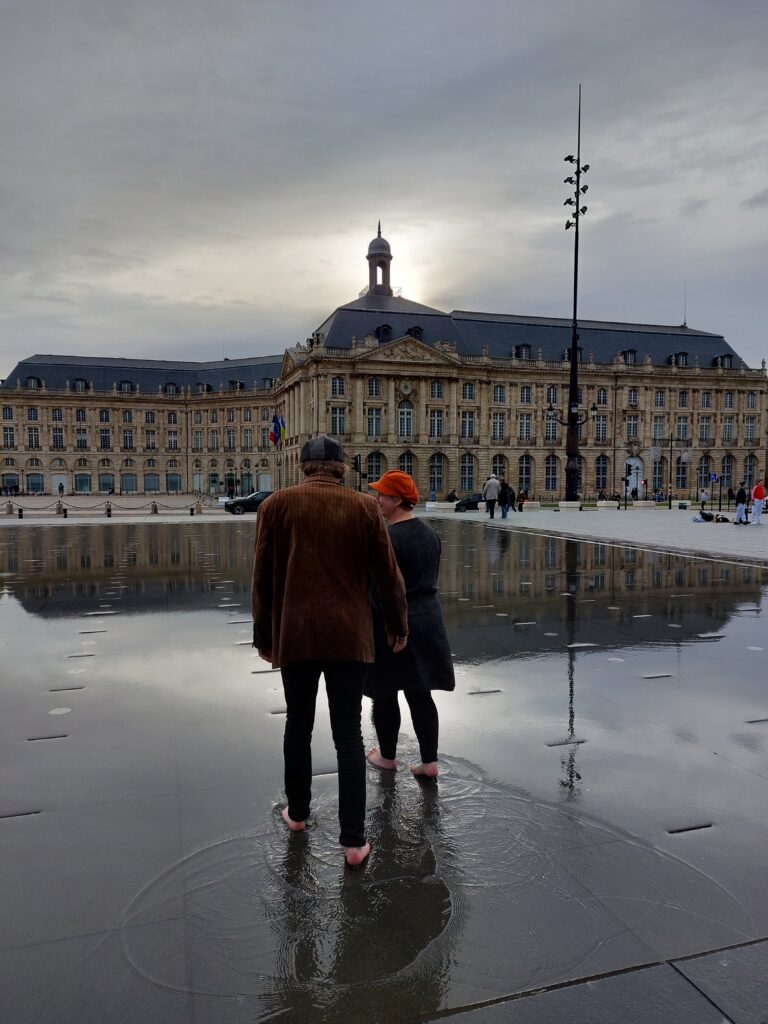
‘Bourse’ = Stock exchange. The bathtub is called “Miroir d’eau” = the Water mirror, and we were not the only adult bathers here, just almost… Since we couldn’t do a full entry, we also dropped the full undressing. Kids and dogs enjoyed the almost 4000 Sq mt of water, and a couple of youngsters actually did surfing! With a water depth of 2 cm – well done! The water depth changes in cycles. If the water disappears – just wait a few minutes, and it will return. A bath in Miroir d’eau is just right!
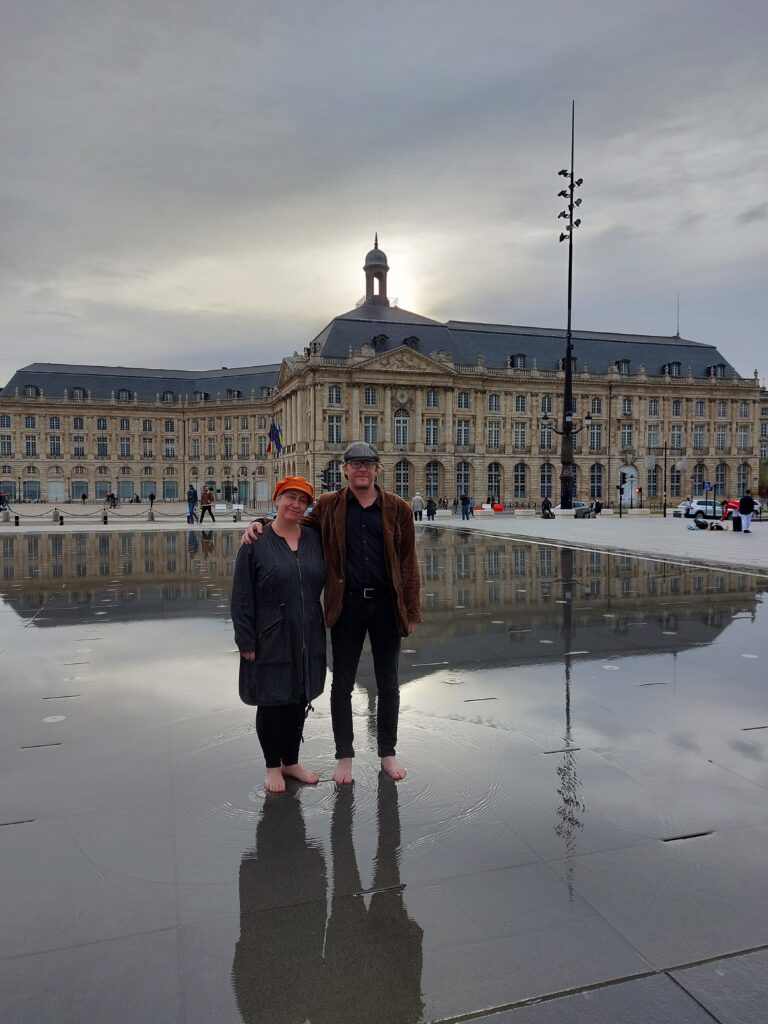
After the bath, some food is just right. In Bordeaux you will find typical French cafès and restaurants, as well as many more or less Italian varieties. Idun was very excited about the cheese and ham plates, preferably mixed. Knut is very fond of seafood, and often ordered seafood platter. These have a somewhat wider selection of species than the similar Norwegian dishes, as periwinkles and common whelk are common ingredients. Our eldest daughter Ulvhild, who is otherwise very enthusiastic about mussels (e.g. Moules-frites or Spaghetti Vongole), was somewhat doubtful, but wanted to try. Then it turned out that actually pulling the animals out of their houses was too much for the youths. Maybe it’s better with a bloody steak?
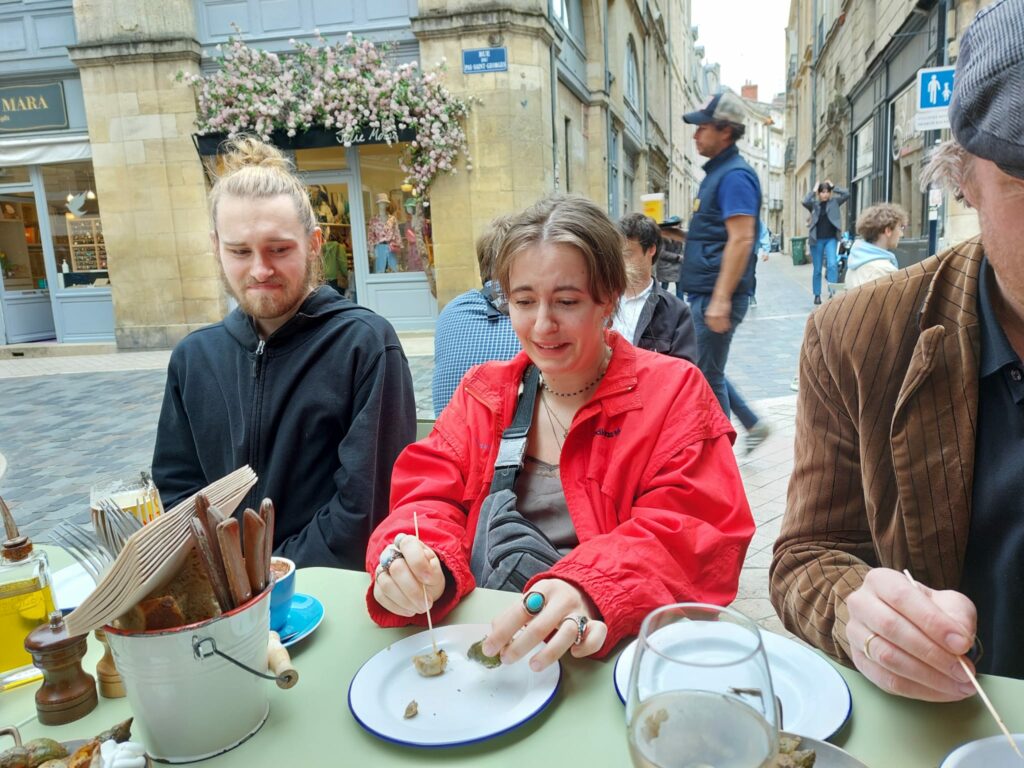
… which made a kind of puzzle for us: Isn’t seafood in Bordeaux just right?